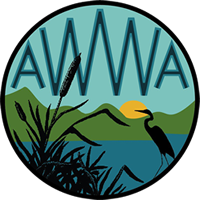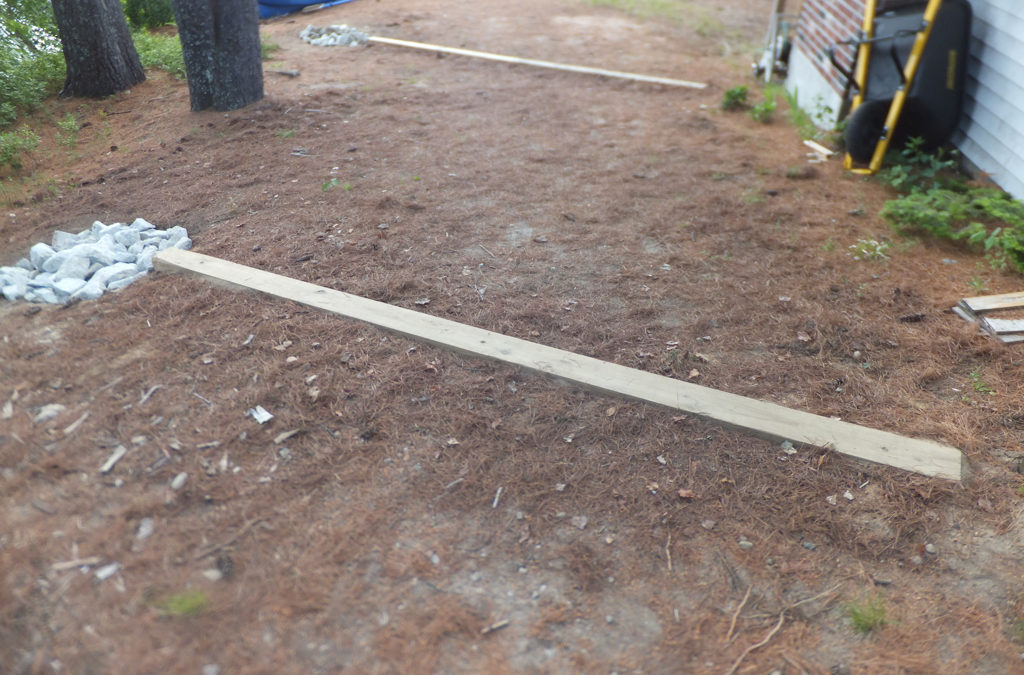Waterbars
Diverting water off paths and trails.
Purpose: A waterbar intercepts water traveling down footpaths, trails and other areas and diverts it into stable vegetated areas.
Installation:
Install waterbars on moderately steep paths with concentrated flows. Select a location where the waterbar outlet can drain to a stable, vegetated area. Install multiple waterbars as needed and space closer together on steeper slopes as directed in Table 1.
Any rot-resistant type of wood, such as cedar, spruce, fir or hemlock logs can be used. For logs, the diameter should be at least 8” at the small end. 6” to 8” diameter, pressure treated or cedar timbers can also be used. The length should extend past the edge of the path on both sides. Install waterbars as follows:

1. Dig the trench
First, dig a trench for the wood that is a 30° angle across the path. Be sure the trench and the waterbar extends off both sides of the path. The trench should be deep enough so the top of the log will be almost flush with the trail on its downhill side once in place. Soil and rock excavated from the trench should be heaped on the trail below the water bar to be used later as backfill.
2. Install the log or timber
Place the log or timber in the trench. The log should fit snugly in the trench with no high point or voids under the log. Secure the waterbar with large stones, rebar pins or wooden stakes. If using stones, partially bury on downhill side. If using rebar, drill 1⁄2” holes 6” in from each edge and pound in 18” pieces of rebar so that the rebar is flush or slightly recessed with the top.
3. Backfill around the waterbar
Dig a 12” wide and 6” deep trench along the uphill side of the bar. Fill the trench with crushed stone, leaving a few inches of the timber exposed. Place a flared apron of stones to armor the waterbar outlet. Pack soil and gravel up against the downhill side of the waterbar so that the top of it is flush with the trail. Cover all disturbed soil with seed and mulch or leaf litter.
Note- This is one of the most common BMPs the AWWA Youth Conservation Corps installs!
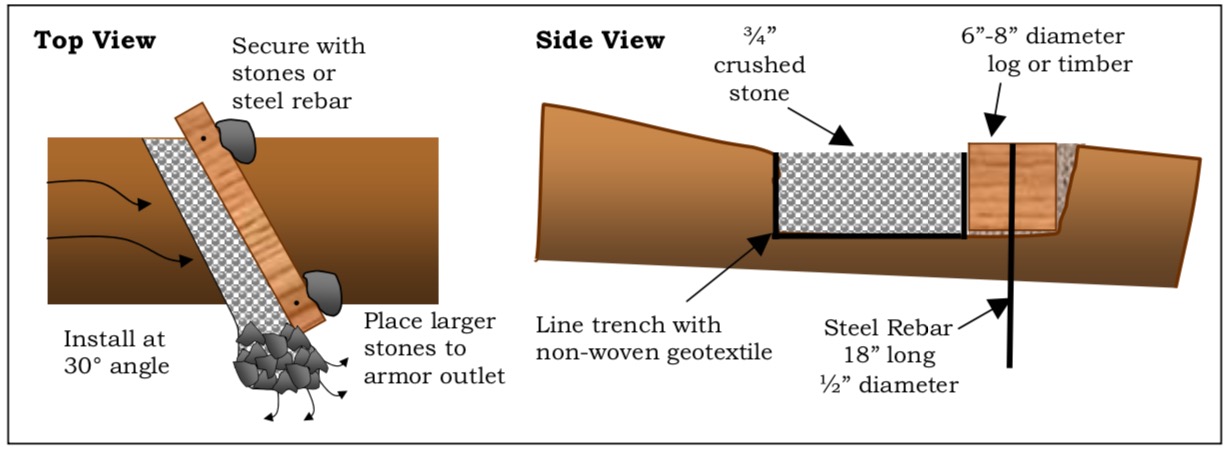
Tip: Waterbars can be added in conjunction with other BMPs. For example, Erosion Control Mulch (ECM) can be spread in waterbars to help slow and absorb runoff. In addition, waterbars can divert runoff into infiltration trenches or rain gardens.
Maintenance: Fallen rot-resistant timbers can often be found on site. Pressure treated timbers, cedar landscape timbers and steel rebar can be purchased from lumber and hardware stores. Some stores will cut rebar to the specified length for a small fee. Otherwise, rebar can be cut with a hack saw.
Contact your local Soil and Water Conservation District for suppliers of non-woven geotextile fabric. Other geotextiles, including landscaping weed barrier, can be substituted for smaller projects.

Note- If you live in Maine: Prior to installation, contact Maine DEP and your town’s Code Enforcement Officer to find out if permits are required. See our page with information about permitting.
Check out our technical assistance page to learn about getting a free erosion evaluation, and for more information on permitting.
Examples

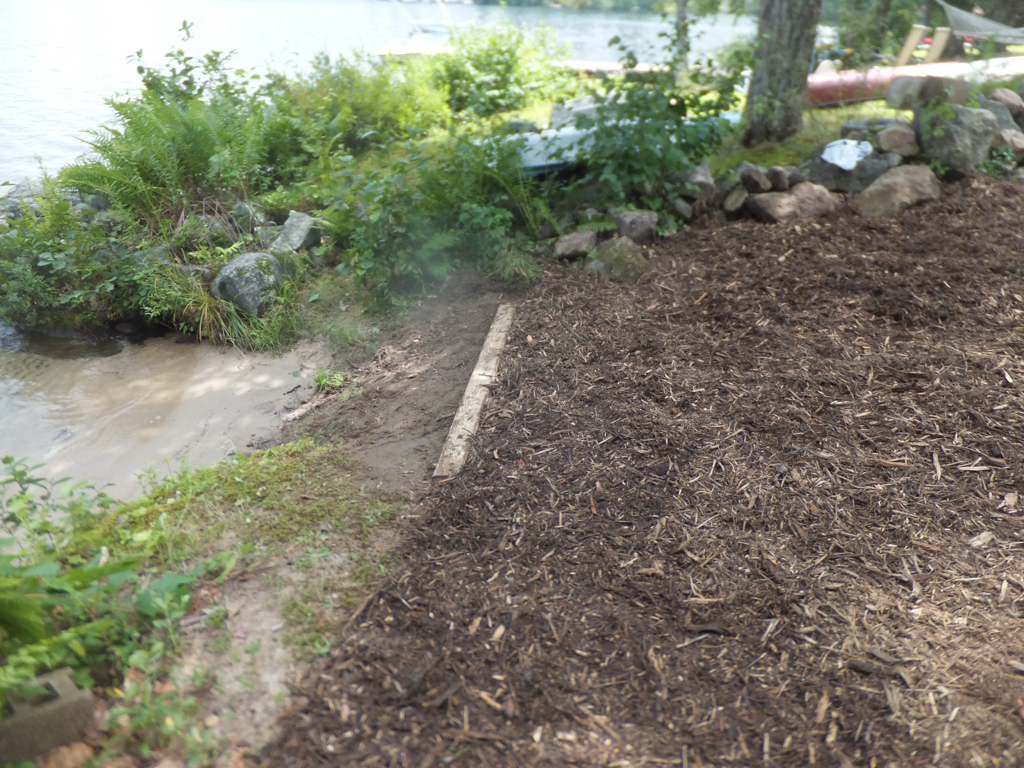
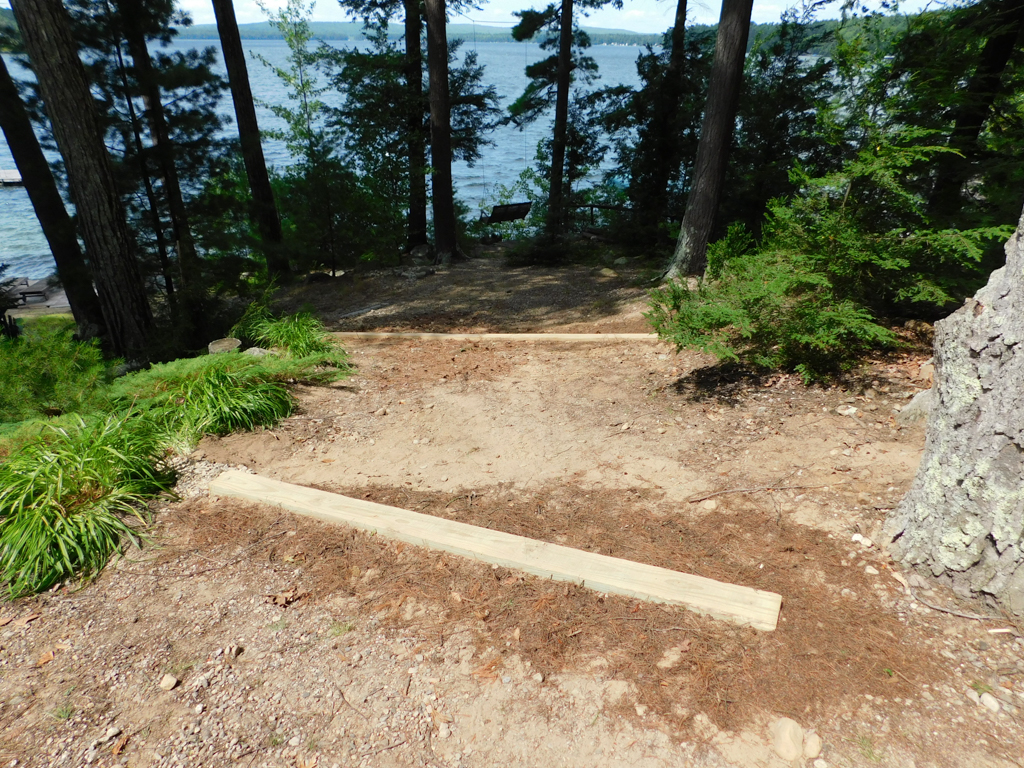
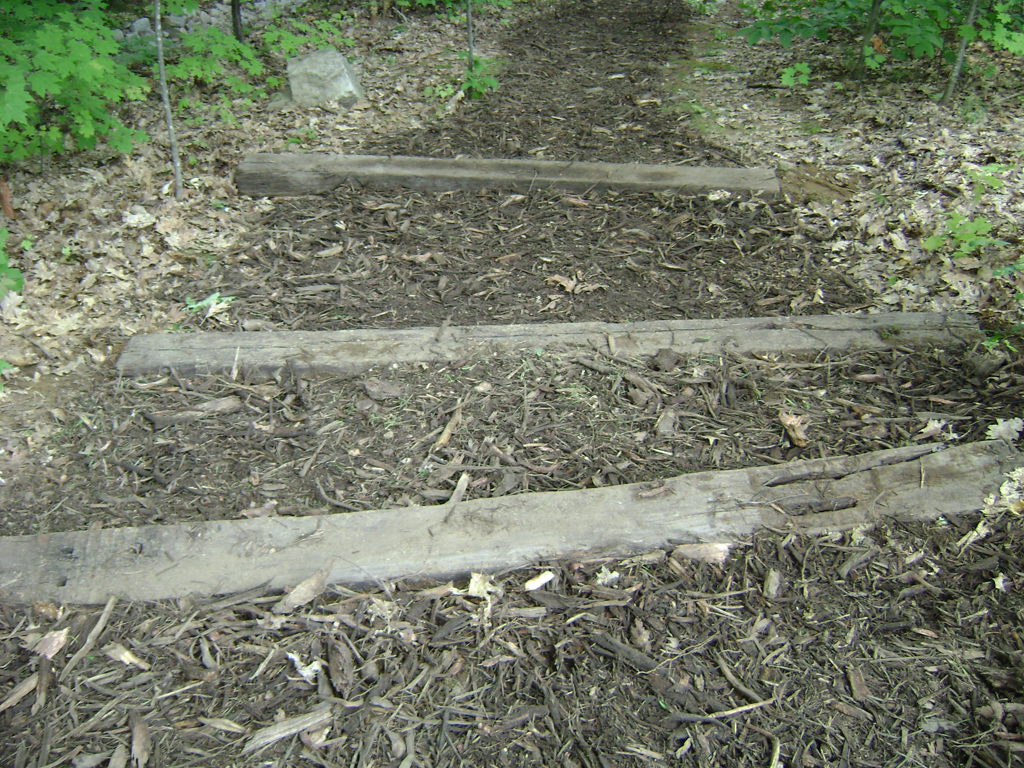
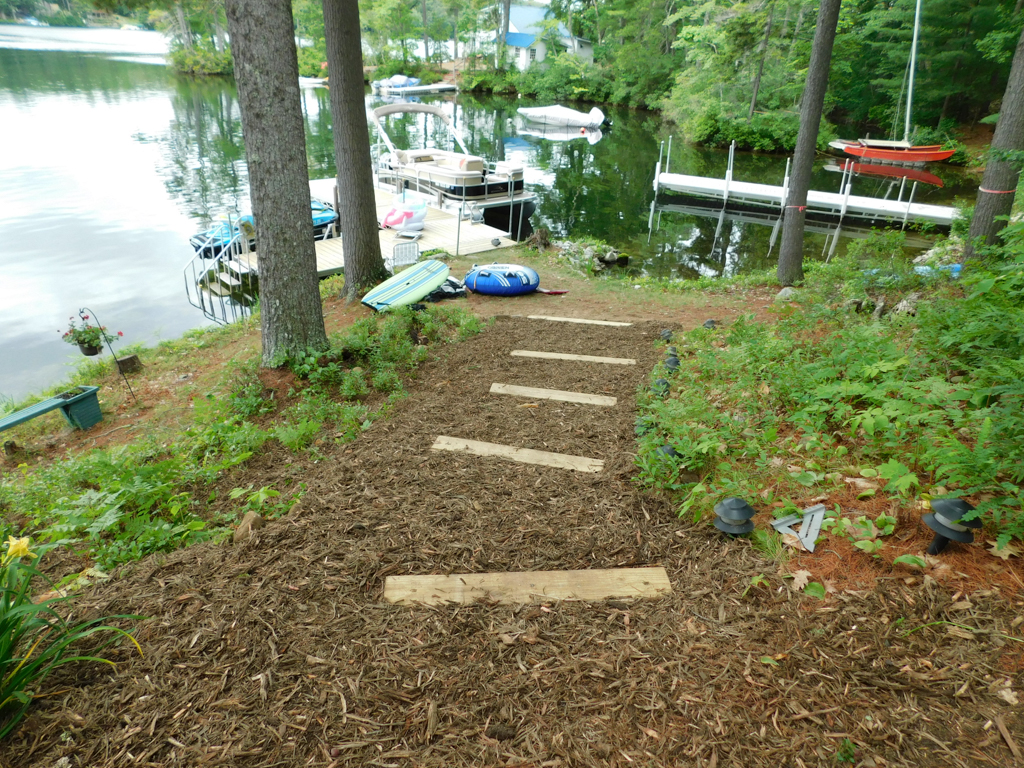
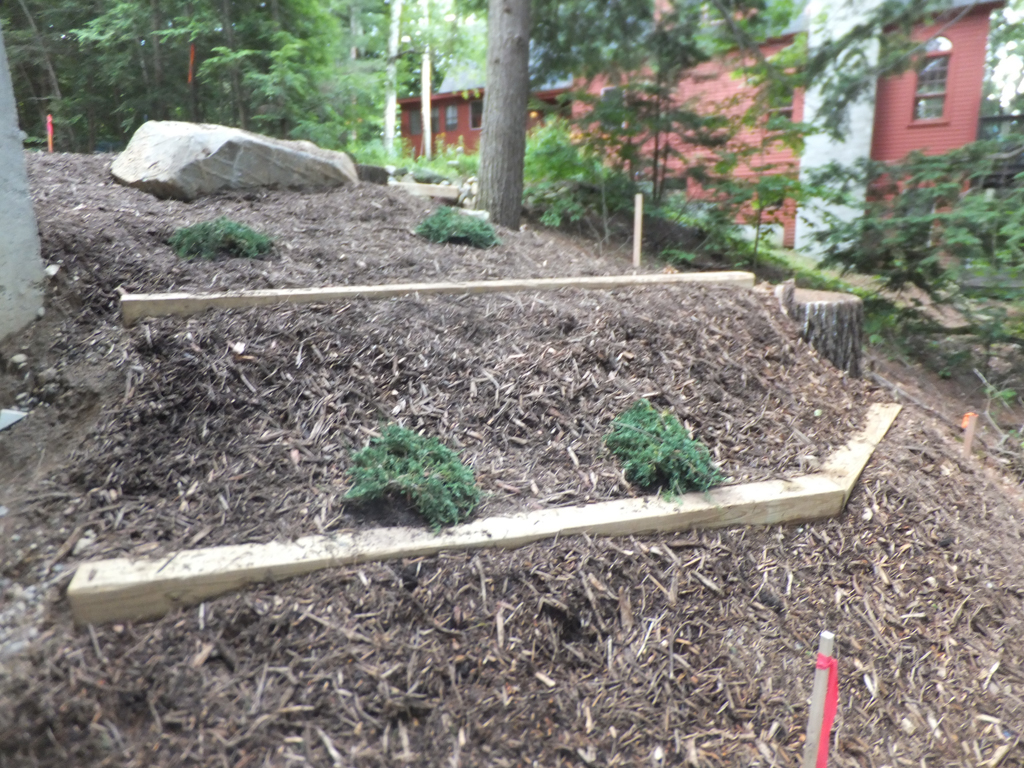


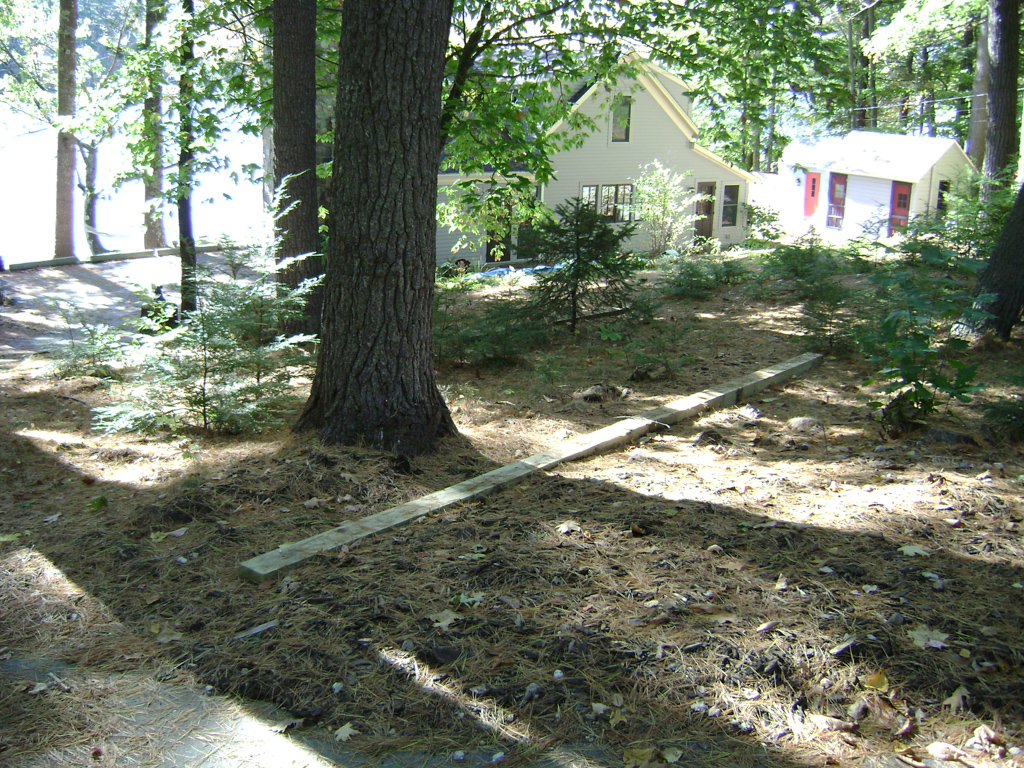

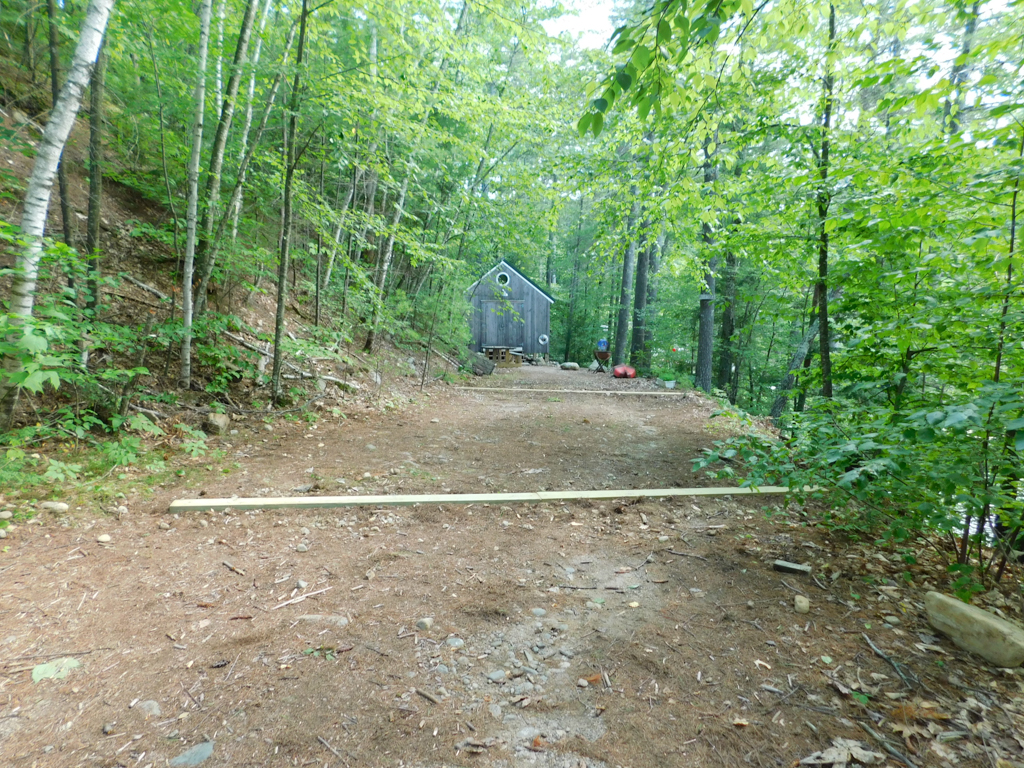
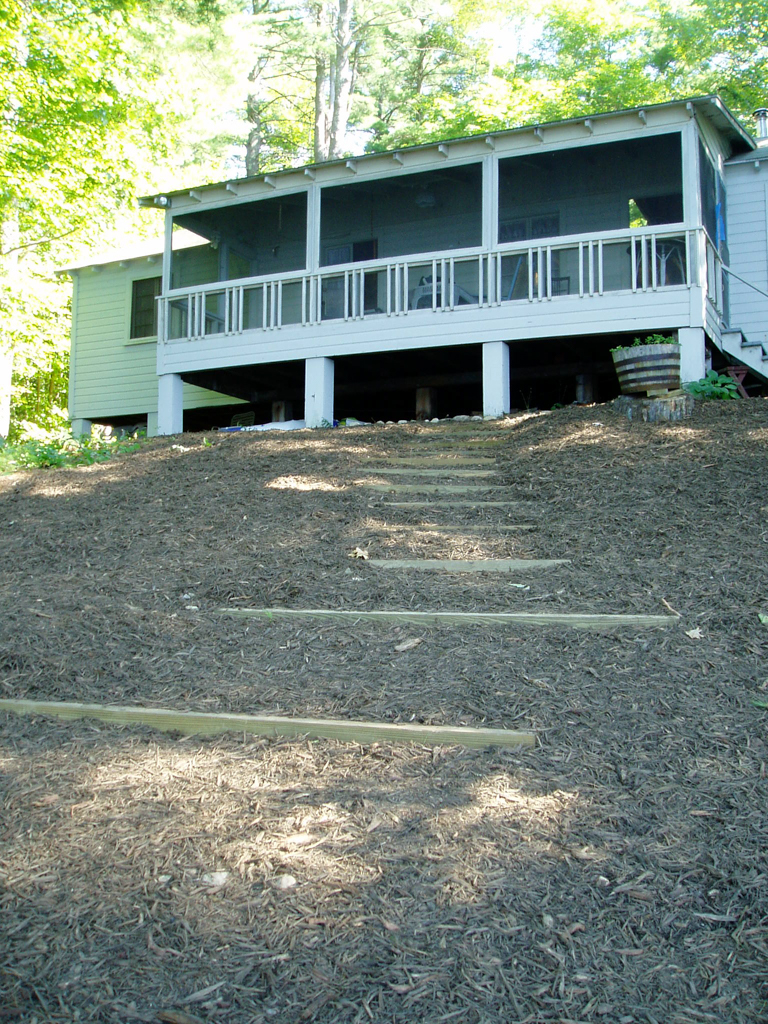
The Conservation Practices for Homeowners Factsheet Series are available at: Maine DEP or the Portland Water District. You can also find fact sheets at SOAK up the Rain NH.
